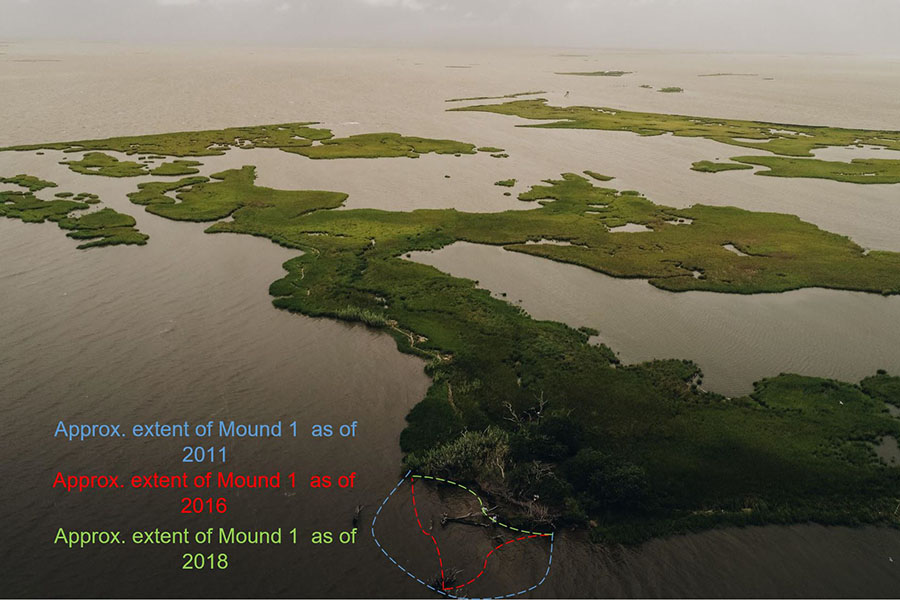
With rising sea levels eroding the Louisiana coastline, valuable archaeological sites that shed light on life in the United States thousands of years ago are disappearing into murky waters.
The Mississippi River Delta is losing land at an alarming rate — since the mid-1930s, Louisiana has lost about 2,000 square miles. Now, a Florida State University archaeologist is helping students learn as much as they can about this precious region and its associated archaeological sites before they disappear.
“It’s incredibly serious,” said Jayur Mehta, assistant professor of anthropology at FSU. “We are losing all these records of the past.”
Mehta, along with colleagues Ted Marks and Brian Ostahowski, organized a field school in Adams Bay, in the Plaquemines Parish of Louisiana. Ten high school students from New Orleans Center for the Creative Arts (NOCCA) participated in the school, while also filming a documentary about the project.
Before earning his doctorate in anthropology, Mehta taught at the NOCCA with Marks, who is a science teacher at the school. Ostahowski is president of the Louisiana Archaeological Society, a research organization dedicated to Native American anthropology.
Peyton Finch, the producer and director of the documentary is now a student at Loyola University New Orleans. She participated in the field school as a high school senior, eager to learn more about the disappearing coastline.
“From a scientific standpoint, I was humbled by in-field, archaeological data collection,” Finch said. “From an artistic standpoint, I learned that being an artist is having something to say and finding the medium that suits your message best. Being mentored by archaeologists and directly involved in archaeological research was critical to developing the film. Artistic and academic disciplines should be more closely associated.”
The project, funded by National Geographic Society, served as an outdoor classroom for these students who learned basic archaeological skills such as mapping, recovering pottery shards and using sediment cores to understand the archaeological mounds in the area that were important to Native American life.
The mounds are roughly 700 to 800 years old and were central to life in the area. It wasn’t uncommon for more prominent members of tribes to build homes upon these mounds. It’s also possible they provided protection from raids, warfare and floods, Mehta said.
But sea level rise has gradually caused these mounds to erode or in some cases totally disappear.
“We’re rapidly losing the possibility of studying these sites,” Marks said in the documentary.
In addition to the documentary, researchers plan to prepare a report for National Geographic and publish studies stemming from the field work.
For more on the documentary, visit the Adams Bay Project.




